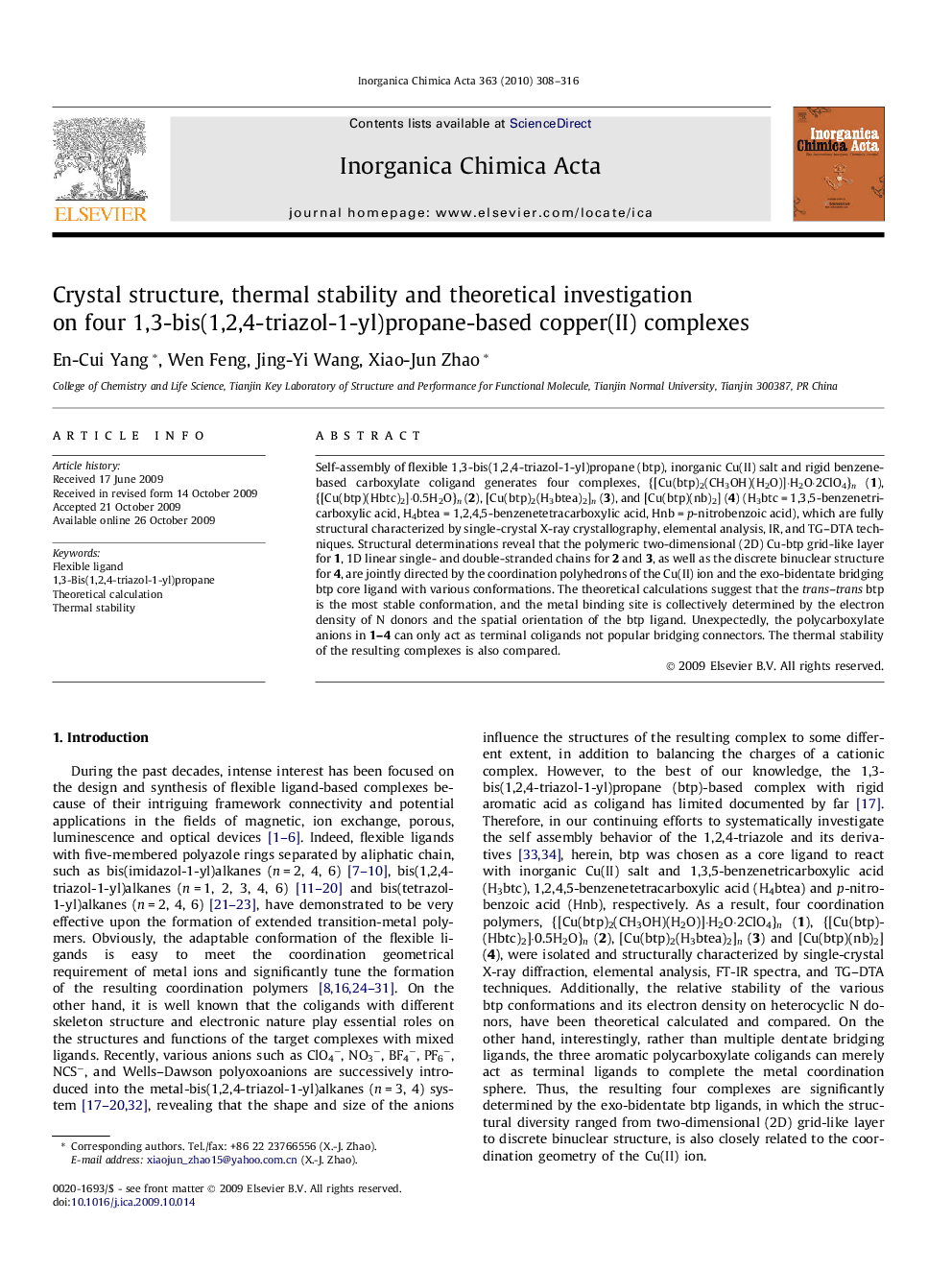| Article ID | Journal | Published Year | Pages | File Type |
|---|---|---|---|---|
| 1311261 | Inorganica Chimica Acta | 2010 | 9 Pages |
Self-assembly of flexible 1,3-bis(1,2,4-triazol-1-yl)propane (btp), inorganic Cu(II) salt and rigid benzene-based carboxylate coligand generates four complexes, {[Cu(btp)2(CH3OH)(H2O)]·H2O·2ClO4}n (1), {[Cu(btp)(Hbtc)2]·0.5H2O}n (2), [Cu(btp)2(H3btea)2]n (3), and [Cu(btp)(nb)2] (4) (H3btc = 1,3,5-benzenetricarboxylic acid, H4btea = 1,2,4,5-benzenetetracarboxylic acid, Hnb = p-nitrobenzoic acid), which are fully structural characterized by single-crystal X-ray crystallography, elemental analysis, IR, and TG–DTA techniques. Structural determinations reveal that the polymeric two-dimensional (2D) Cu-btp grid-like layer for 1, 1D linear single- and double-stranded chains for 2 and 3, as well as the discrete binuclear structure for 4, are jointly directed by the coordination polyhedrons of the Cu(II) ion and the exo-bidentate bridging btp core ligand with various conformations. The theoretical calculations suggest that the trans–trans btp is the most stable conformation, and the metal binding site is collectively determined by the electron density of N donors and the spatial orientation of the btp ligand. Unexpectedly, the polycarboxylate anions in 1–4 can only act as terminal coligands not popular bridging connectors. The thermal stability of the resulting complexes is also compared.
Graphical abstractFour 1,3-bis(1,2,4-triazol-1-yl)propane (btp)-based copper(II) complexes ranged from polymeric two-dimensional layer to discrete binuclear structure are significantly directed by the coordination geometry of the metal ion and exo-bidentate btp ligand. The conformational stability and the electron density of N donors of the btp ligand are further discussed by theoretical calculations.Figure optionsDownload full-size imageDownload as PowerPoint slide
